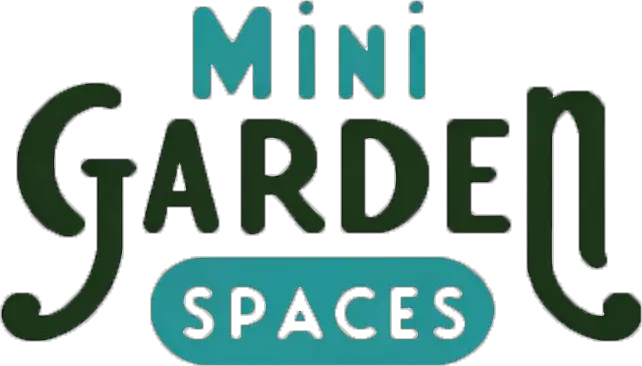How to Create a Container Rock Garden
February, 2023 |When your garden space is limited, or you’re living in a rental, a container rock garden is a perfect way of creating your own mini rockery. A rockery is a great small garden style for a mini outdoor space.
No matter how big your yard is, whether it’s a balcony or a tiny urban space, a rock garden is a way of bringing a little piece of the wild into your garden. Rock gardens are a small recreation of wild landscapes, usually filled with hardy plants native to deserts or alpine slopes.
In this guide to creating a container rock garden, we’ll cover…
- Choosing a container
- Plants to add to your container rock garden
- Choosing the right soil and growing substrate
- Assembling your container rock garden
- Ongoing care and maintenance tips

Choosing a container
To create your container rock garden you could use any container. But for a natural, more aesthetically pleasing look, a stone or terracotta container is usually the most popular. Though any low, bowl-shaped container would be perfect.
Remember that when filled with plants and soil, stone planters can be extremely heavy. So if your rock garden will be positioned on a balcony, a stone effect container could be a better option.
Generally, most rock garden plants need very good drainage as alpine and desert plants are generally native to dry habitats. So a wide, shallow container is best. This means your plants won’t be sitting in water-logged soil, as water can drain away more quickly.

Plants for a container rockery
A rock garden is all about the plants that you add! Most plants suited to a rockery are originally from rocky environments. From mountainsides to dry, arid deserts.
You can mix plants together, but we generally recommended sticking to one of the following plant groups, or landscape environments.
The key to creating a natural-looking rock garden is to recreate the landscape that those plants are from. It also helps them thrive, as they’ll need the same soil type and drainage!

The plants you choose can be influenced by what sort of landscape you’re trying to recreate. If you were mesmerized by wildflowers in the Swiss Alps then you might be more interested in alpine plants.
But if you prefer a more desert-inspired look, you might create a rock garden using succulents and cacti.
Alpines:
As their name suggests, most alpine rockery plants are originally native to mountainous, alpine environments. They’re generally slow-growing or small in size, so they’re perfectly suited to a small container rockery.
Some of our favorite perennial alpine plants include:
- Mountain Aster
- Campanula
- Thrift (Armeria)
- Fleabane (Erigeron)
- Gentian
- Saxifrages
- Lewisia
- Thyme

Mediterranean herbs:
Many Mediterranean herbs and plants are drought-tolerant, so they would work really well with other plants in a container rock garden.
A lovely addition to a small container rock garden would be creeping thyme (Thymus praecox). It’s an aromatic trailing plant that will spill over the edges of your planter with a cascade of purple flowers in summer. It’s also a great trailing plant for a kitchen herb hanging basket!
Cacti:
If you’re looking to recreate a more dry, desert-like setting, then cacti are a perfect choice. As cacti are relatively slow-growing, you can add almost any small cacti plant, and re-pot it if and when it gets too big for your container rock garden.
Here are some beautiful, mini cacti varieties you could add…
- Opuntia ‘Baby Rita’
- Beavertail cactus
- Fairy Castle cactus (only outdoors in warmer climates)
- Star cactus
- Euphorbia heptagona

Succulents:
There’s an amazing variety of succulents that you can add to a small rock garden in a container. From sedum to echeveria. Here are some succulents that will help you recreate a mini desert landscape…
- Sedum ‘Angelina’ – forms a low-growing mat
- Sedum ‘October Daphne’ – clumps of silvery leaves with pink flowers
- Sempervivum ‘Cobweb’ – beautifully complex green rosettes
- Echeveria ‘Elegans’
- Agave


Dwarf Conifers:
Mini conifers can provide amazing color and textures year-round. If you’re looking to create more of a natural, forest rock garden, use dwarf conifers! You can even buy moss online to give the planter a really natural look.
Some of our favorite evergreen dwarf conifers include…
- Juniperus squamata ‘Blue Star’
- Chamaecyparis lawsoniana ‘Snow White’
- Pinus mugo ‘Mops’ (Dwarf Mountain Pine)

With such an incredible variety of plants to choose from you could create a small container rock garden that flowers almost all year round. These plants would also work really well in a mini fairy garden too.
Make sure you double-check how hardy plants are before buying. Some alpines might not survive the climate in Florida and some cacti or succulents may struggle in a wet and cold northern climate.
Also, double-check how tall plants may grow (in height and width!). Some larger, or spreading, plants may eventually outgrow your rock garden container.
Choosing the right soil and growing substrate
To keep your rockery plants as happy as possible, you’ll need to plant them in the right soil.
A lot of the plants mentioned above come from pretty harsh environments. Some are used to scorching temperatures, blizzards, or low rainfall.
This means you’ll need to use a really well-draining substrate for your container rock garden.
You can usually buy bags of soil specifically mixed for alpines. They’ll contain lots of grit which helps the soil to drain more easily. This stops your plant roots from rotting in water-logged soil.
You could even add small rocks or old pieces of cracked pots to make drainage even better.
Make sure you double-check the growing conditions on any plants you buy. Some alpines, like the, for example, Shooting Star alpine (Dodecatheon), are better suited to partially shady, damp conditions.

Assembling your container rock garden
When you’ve decided which plants you’d like to add, you have a soil substrate and a container, it’s time to assemble!
Top tip: If you’re making your own soil, add compost with grit or sand in a half-and-half mix. You could even use your own homemade compost!
We usually recommend part filling your low, bowl-shaped container with your soil mix (adding some larger stones at the bottom for drainage).
Next, place your plants, still in their pots, into the positions that you’d like to plant them. Make sure to leave ample space for each plant to grow — especially mat-forming alpines or succulents!

Then begin to add compost around the plant pots until the soil reaches the top layer of soil of the plant pots. You can then carefully remove the pots and plants, remove the pot from the plant’s root ball, and it should easily fit back into the hole that was left!
This process stops too much soil from getting on top of plants and allows you to add the perfect amount of soil.
Finishing touches
As the name suggests, you could also add some rocks to your rock garden! If you have any interesting rocks in your garden or a nearby area you could add these in. It’s a great finishing touch that can give your rock garden a more realistic look. Driftwood is another attractive feature that works well in rock gardens.

To improve drainage even further sprinkle a layer of decorative grit in between the plants to cover the soil surface.
This prevents water pooling around plant stems, yet also stops too much water from evaporating from the container.
Ongoing care tips for your container rock garden
Although relatively easy to grow, most alpines, succulents, cacti, and conifers will need some pruning.
Some mat-forming alpines can be vigorous, so if they start taking over the container make sure to keep them in check.

Rock gardens are a great container option for planting in a xeriscape garden, as rockery plants are generally more drought-hardy.
Looking for more container gardening ideas? Have you ever thought about growing fruit trees in containers?
Featured Image: Photo by Katie Burkhart on Unsplash






